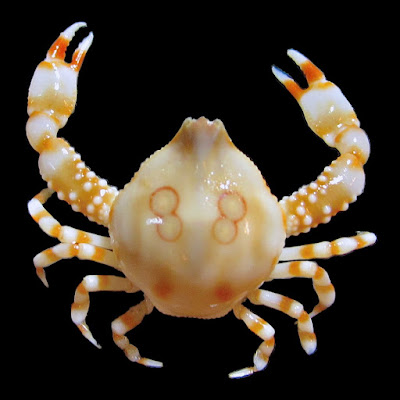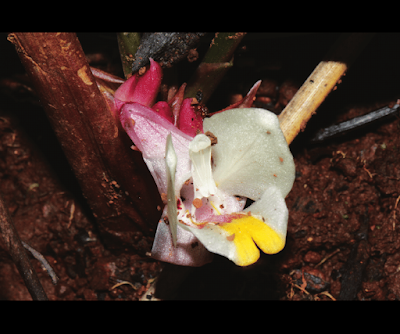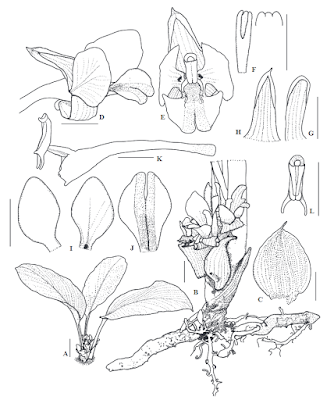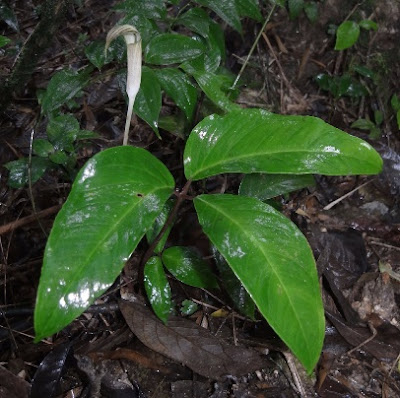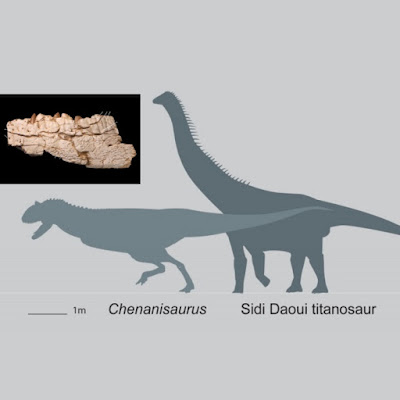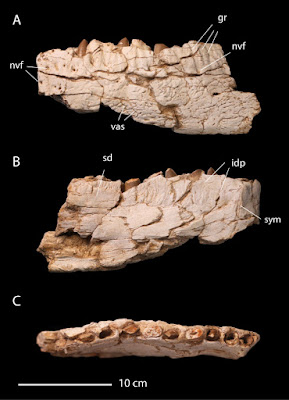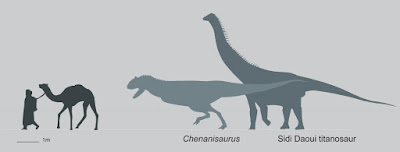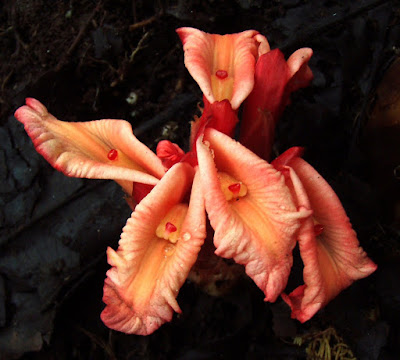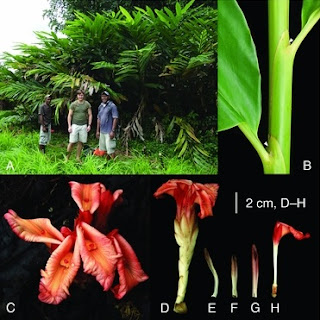[Most Recent Entries] [Calendar View]
Sunday, April 9th, 2017
| Time | Event | ||||||
| 1:07p | [Crustacea • 2017] Coleusia janani • A New Species of Leucosiid Crab (Decapoda: Brachyura: Leucosiidae) from the Arabian Gulf
Abstract The Indo-West Pacific genus Coleusia Galil 2006, was recently described and now comprises seven species. We describe a new species from the western Arabian Gulf, Coleusia janani n. sp. The new species is closely related to the congener C. biannulata (Tyndale-Biscoe & George, 1962), and can be distinguished from other species at these genus congeners mainly by the straight upward apical shape of the male first pleopod (G1). An updated identification key to the species of Coleusia, as well as an overview of the geographical distribution of the species included in the genus are also presented. Keywords: Crustacea, marine biodiversity, Qatar, taxonomy Systematics Family Leucosiidae Samouelle, 1819 Subfamily Leucosiinae Samouelle, 1819 Genus Coleusia Galil, 2006 Coleusia janani sp. nov.
Type locality. Arabian Gulf; off Qatar. Etymology. In recognition of the Qatar University Oceanographic RV Janan used in the collection of the present material. Distribution. Currently only known from the type locality. Ecology. Offshore zones with sandy mixed substrates of gravel and mud; depth between 22 and 27 m. Material collected with water temperature that varied between 27 and 28°C and salinity between 39 and 41 ppt. Bruno Welter Giraldes, Ibrahim Al-Maslamani and David Smyth. 2017. A New Species of Leucosiid Crab (Decapoda: Brachyura: Leucosiidae) from the Arabian Gulf. Zootaxa. 4250(4); 389–395. DOI: 10.11646/zootaxa.4250.4.9 | ||||||
| 3:14p | [Botany • 2014] Curcuma peramoena • A New Species (Zingiberaceae) from north Lao PDR
ABSTRACT Curcuma peramoena Souvann. & Maknoi, a new species from north of Laos is described and illustrated here. KEYWORDS: Curcuma, Zingiberaceae, new species, Lao PDR
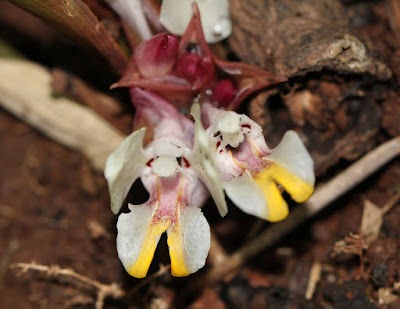 Etymology.— The specific epithet, peramoena, refers to its very beautiful flowers. Vernacular name.— ຫວ້ານຫົວນ້ອຍ (Wan Houa Noi). Notes.— This species belongs to subgenus Ecomata Škorničk. & Šída f. (Záveská et al., 2012) because of the following characters: lack of coma bract, open flower, presence of epigynous glands and conical anther spur. ... Keooudone Souvannakhoummane and Charun Maknoi. 2014. Curcuma peramoena (Zingiberaceae), A New Species from north Lao PDR. THAI JOURNAL OF BOTANY. 6(2); 125-130. | ||||||
| 3:22p | [Botany • 2017] Arisaema brinchangense Y.W. Low, Scherberich & Gusman (Araceae), A New Threatened Species Endemic to the Cameron Highlands (Peninsular Malaysia)
Abstract Arisaema brinchangense Y.W. Low, Scherberich & Gusman (Araceae) is described as new and illustrated. The new species is similar to Arisaema anomalum Hemsl. but differs by the morphology of its spathe. It is placed under Arisaema sect. Anomalum Gusman & L. Gusman based on morphological and growth characters, the latter observed in the field and unique to that section. Arisaema brinchangense is endemic to the Cameron Highlands, Pahang, Peninsular Malaysia, and is assessed as “Critically Endangered” following IUCN Red List Categories and Criteria due to habitat loss. Keywords: ARACEAE, Arisaema, Peninsular Malaysia, Cameron Highlands, Taxonomy, New species Etymology. – The species epithet refers to Mount Brinchang (2,031 m), where the type specimen was collected. Distribution and Habitat.– Arisaema brinchangense is so far known only from around the summit of Mount Brinchang, Cameron highlands where it grows in the montane forest c. 2000 m on moist forest floor covered with thick organic litter under deep to semi-shaded condition. Yee Wen Low, David Scherberich and Guy Gusman. 2017. Arisaema brinchangense Y.W. Low, Scherberich & Gusman (Araceae), A New Threatened Species Endemic to the Cameron Highlands (Peninsular Malaysia). Candollea. 71(1); 83–89. DOI: 10.15553/c2016v711a10 | ||||||
| 4:18p | [Paleontology • 2017] Chenanisaurus barbaricus • An Abelisaurid from the latest Cretaceous (late Maastrichtian) of Morocco, North Africa
Abstract During the latest Cretaceous, distinct dinosaur faunas were found in Laurasia and Gondwana. Tyrannosaurids, hadrosaurids, and ceratopsians dominated in North America and Asia, while abelisaurids and titanosaurids dominated in South America, India, and Madagascar. Little is known about dinosaur faunas from the latest Cretaceous of Africa, however. Here, a new abelisaurid theropod, Chenanisaurus barbaricus, is described from the upper Maastrichtian phosphates of the Ouled Abdoun Basin in Morocco, North Africa on the basis of a partial dentary and isolated teeth. Chenanisaurus is both one of the largest abelisaurids, and one of the youngest known African dinosaurs. Along with previously reported titanosaurid remains, Chenanisaurus documents the persistence of a classic Gondwanan abelisaurid-titanosaurid fauna in mainland Africa until just prior to the end-Cretaceous mass extinction. The animal is unusual both in terms of its large size and the unusually short and robust jaw. Although it resembles South American carnotaurines in having a deep, bowed mandible, phylogenetic analysis suggests that Chenanisaurus may represent a lineage of abelisaurids that is distinct from those previously described from the latest Cretaceous of South America, Indo-Madagascar, and Europe, consistent with the hypothesis that the fragmentation of Gondwana led to the evolution of endemic dinosaur faunas during the Late Cretaceous. Keywords: Dinosauria; Theropoda; Ceratosauria; Abelisauridae; Gondwana; Biogeography
Systematic paleontology Dinosauria Owen (Owen, 1842) Saurischia Seeley (Seeley, 1888) Theropoda Marsh (Marsh, 1881) Ceratosauria Marsh (Marsh, 1884) Abelisauridae Bonaparte and Novas (Bonaparte and Novas, 1985) Chenanisaurus barbaricus new genus and species Etymology. The genus name refers to the Sidi Chennane phosphate mines, the type locality, and Greek ‘sauros, ‘lizard’. The species name is derived from the Greek barbaros, “savage” or “barbaric” and also refers to Barbary, a name historically used for Morocco and the northwest coast of Africa. Diagnosis. Large abelisaurid characterized by a proportionately deep mandible, dentary bowed in lateral view, lateral groove and associated foramina located high on dentary; anterodorsal margin of dentary downturned in lateral view; massive symphysis, with anterior margin of symphysis vertical in lateral view; tip of jaws broad, with dentaries meeting at an obtuse angle. Holotype. OCP DEK-GE 772, anterior end of the left dentary ( Fig. 3 ; Fig. 4). Horizon and Locality. The type specimen is reported as coming from the upper Maastrichtian (Couche III) of Sidi Chennane; the pale white color of the bone and the color of the associated matrix are consistent with the preservation seen in other material recovered from this locality. The isolated premaxillary teeth come from the upper Maastrichtian (Couche III) of Sidi Daoui. The maxillary tooth is of unknown provenance but likely comes from either Sidi Chennane or Sidi Daoui. All specimens come from the Ouled Abdoun Basin, Morocco North Africa ( Fig. 1).
Nicholas R. Longrich, Xabier Pereda-Suberbiola, Nour-Eddine Jalil, Fatima Khaldoune and Essaid Jourani. 2017. An Abelisaurid from the latest Cretaceous (late Maastrichtian) of Morocco, North Africa. Cretaceous Research. In Press. DOI: 10.1016/j.cretres.2017.03.021 "Chenanisaurus barbaricus" ....by lythronax-argestes lythronax-argestes.deviantart.com/art/Chenanisaurus-barbaricus-671571810 New moderately-sized abelisaur. I thought the silhouette in the paper was too majungasaurine, so I made my own with blackjack and hookers. Dentary line drawing from Longrich et al. (2017), silhouette from Rugops by Crizz30 on Commons, human from Andrew Farke on Phylopic as usual. | ||||||
| 4:50p | [Botany • 2017] Etlingera frederikii • A New Species of Etlingera (Zingiberaceae) from Bougainville Island, Papua New Guinea
Abstract A new species, Etlingera frederikii, is described and illustrated, and is the first record of the genus in the Bougainville Region. Etlingera frederikii and E. cevuga, which occurs in Fiji and Samoa, are the two most easterly species in the distribution range of the genus. The new species differs from Etlingera cevuga in its much larger leaves, with a conspicuously silky-haired band on the ligule; the smaller, narrowly ovoid to cylindrical inflorescence with pale brown bracts (not hemiglobose with reddish brown bracts); and fewer, smaller flowers.
Etlingera frederikii A.D.Poulsen, sp. nov. Etymology. Named in honour of H.R.H. Frederik, Crown Prince of Denmark, who was the patron of the Danish Expedition Fund that planned and executed the Galathea 3 circumnavigation during which this new species was discovered. The Crown Prince has himself participated in expeditions to Central China and Northeast Greenland and has also supported an expedition to Borneo in 2002 led by the first author. Distribution. Bougainville Island. So far, documented only from the type locality in ridge forest at 850 m. It is likely to occur naturally on the neighbouring island to the south-east, Choiseul, in the Solomon Islands. A cultivated plant with a dried-up inflorescence in a garden in Buka Town, Buka Island (just north of Bougainville Island) is very likely of the same species. Vernacular name. Rurutate (Rotokas language). Uses not known.
A. D. Poulsen and B. B. Bau. 2017. A New Species of Etlingera (Zingiberaceae) from Bougainville Island, Papua New Guinea. Edinburgh Journal of Botany. DOI: 10.1017/S0960428617000026 |
| << Previous Day |
2017/04/09 [Calendar] |
Next Day >> |
